Streets for People / Mayor Bravely Puts Onus on Commission to Do Heavy Lifting on Better Bike, Walk and Transit. Will They Come Through?
The City Commission received a final draft of the fourth of six priorities for its “Key West Forward Strategic Plan” on June 15. The “Traffic and Pedestrian Friendliness” plank, full of bike, transit, pedestrian, and parking friendly projects, as well as a study and policy changes, shows some real promise. But the plan seems to rest on solving a heretofore unsolved problem of finding enough bus drivers for Key West Transit. Mayor Teri Johnston gamely said “The answer is us (referring to everyone on the dais). Are we willing to spend the money that gets us there? The limiting factor is us and what we’re willing to commit to.” We applaud Mayor Johnston for putting the onus on herself and the Commissioners. Let’s look at the plan, what’s good, bad, and missing and analyze the chances for it bringing about needed change.
Key West Forward Strategic Plan
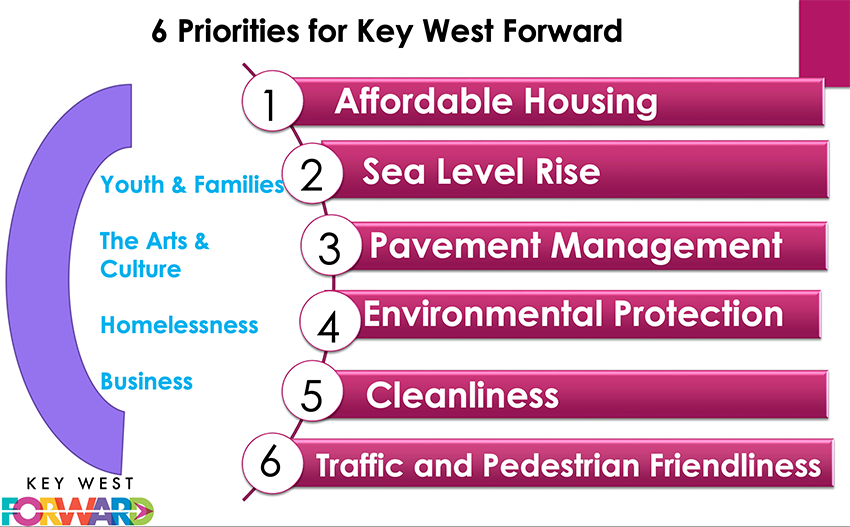
Mayor Johnson ran on a platform that included developing a strategic plan and she’s been coming through on this item with the excellent help of the plan’s amazing consultant Elisa Levy, the City Manager, staff, and citizens.
City of Key West Transit, Engineering, Parking, Planning and Sustainability directors and staff teamed up over a period of months to work on the “Traffic and Pedestrian Friendliness” element of the strategic plan. Their work was vetted with a couple focus groups and some local bike and transit advocates (including me). All of this was coordinated by Elisa Levy who has already completed and presented final drafts for Affordable Housing, Sea Level Rise, and Cleanliness. Environmental Protection and Pavement Management will be finished over the next month or so, ensuring the entire Key West Forward plan will be submitted to the City Commission at its August 17 meeting for approval.
If you’ve read the drafts and seen Ms. Levy’s presentations, you know that some excellent work is being done. The Key West Forward Plan is being completed in little more than 8 months, following on the heels of completing an excellent Key West Recovers – 17-Point Business and Humanitarian Covid Recovery Plan for 2020 – 2021 that came out last October. Here’s video of Ms. Levy’s presentation to the Commissioners and here’s the PowerPoint she used to explain the plan.
The Good News
When Ms. Levy presented to Commissioners, she started with the “good news” that 15% of us Key West residents’ bike to work and 8% walk. She also shared that this element relies upon some excellent recently adopted plans including the Key West Bicycle and Pedestrian Master Plan adopted in March 2019, the Key West Transit 10-Year Development Plan, adopted at the end of 2019 and a Parking and Alternative Transportation Report done in 2018. But even with the good news, there’s lots of work still to do.
Community Survey Rates Traffic and Parking Very Low
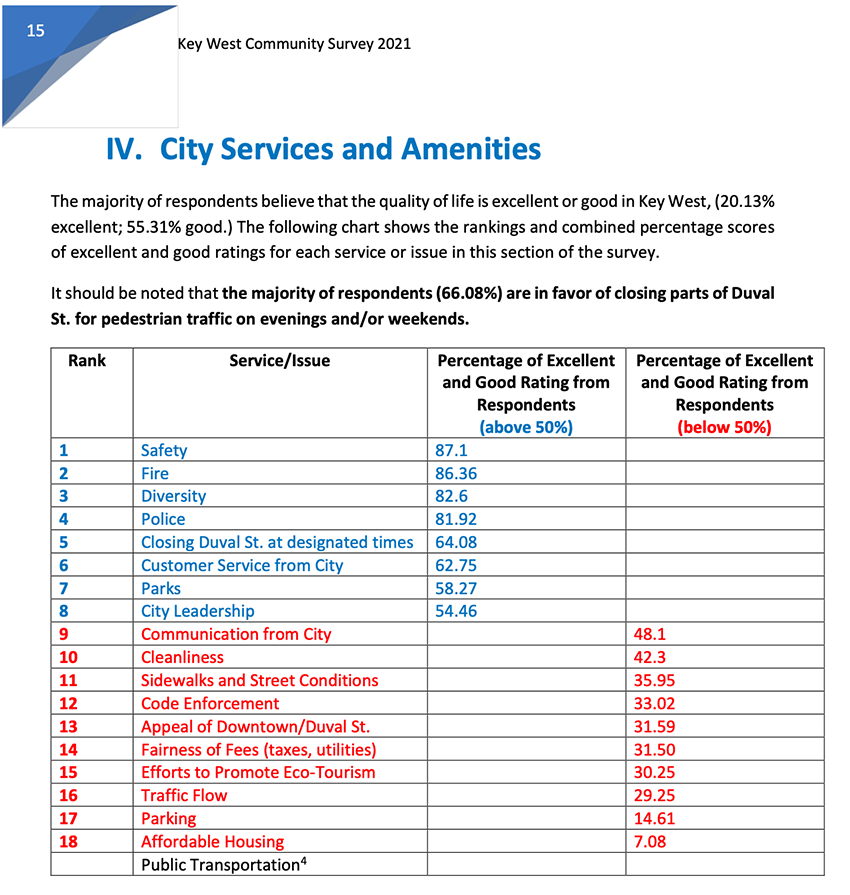
The entire Key West Forward Strategic Plan is built upon the findings of a January, 2021 Key West Community Survey of 3,776 respondents. This is how the six major priorities were identified as well as which projects were most prioritized by citizens and which city services and amenities were rated as lacking and needing improvement. Of 18 city services or issues ‘traffic flow’ came in ranked at 16 and ‘parking’ came in at 17. The only thing ranked lower was ‘affordable housing.’ The sad thing is that although ‘public transportation’ was asked to be rated by the 3,776 residents, so few used it that they responded “I don’t know” on the questions and so it couldn’t even be rated and ranked. This shows you how far transit must go to improve here in Key West.
The survey also pointed out that Key West residents are highly motivated about reducing our carbon footprint.
How We Reduce Congestion and Our Carbon Footprint
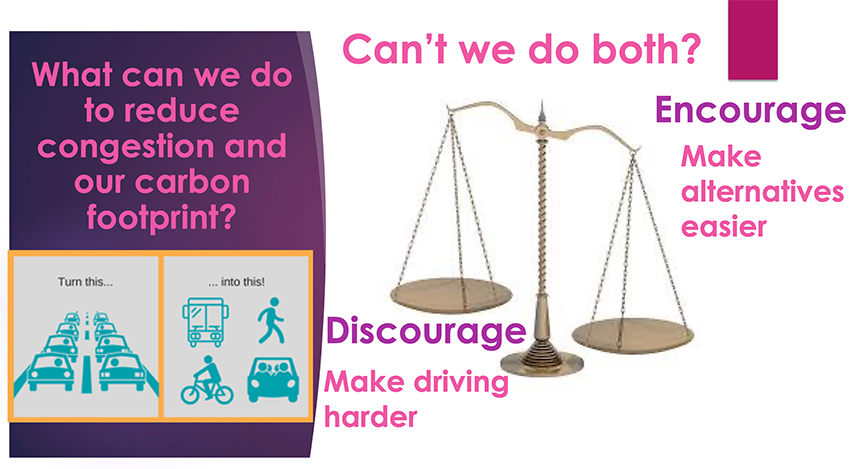
Ms. Levy noted that Traffic and Pedestrian Friendliness is a priority because we’re so congested. She pointed out that Key West is one of the nation’s top 5 destinations and that our average monthly airport arrivals have jumped from fewer than 50,000 to 70,000. The solution to reducing congestion and our carbon footprint? Discourage driving and encourage use of alternatives like bike, walk and transit by making them easier to use.
The consultant said that to make real progress Key West would need to both make it harder to drive and easier and safer to bike, walk and transit. But that this plan mostly relies on trying to make the alternatives easier because if we make it harder to drive, we don’t really have a viable transit alternative for people. She said if we take something away or provide disincentives to driving than we must provide more vibrant and frequent public transit because lots of people can’t bike or walk. And we can’t provide transit that’s good enough to get people to switch from driving to transit because we can’t find enough bus drivers, as there’s a labor shortage. And here’s where the Traffic and Pedestrian Friendliness element begins to lose some of its promise and luster, which we’ll address in the analysis.
The Plan for Traffic and Pedestrian Friendliness
The Plan for Traffic and Pedestrian Friendliness to “improve the ease and safety of residents and visitors as they traverse the island” includes four goals:
Goal 1: Bike and Pedestrian Routes
– Bike and walking trails, bike racks, wayfinding, design and build Wicker Bike Trail and Crosstown Greenway Phase 2
– Sidewalk repair, safe crossings, and intersections
– E-mobility devices, street trees and a reverse angle parking pilot
Goal 2: Public Transit
– More frequent (every thirty minutes on North and South Lines and every hour on Lower Keys shuttle) bus service
– Maps at stops, transit app, WIFI on buses
– Retain drivers
Goal 3: Parking
– Explore: Intermodal Center, rooftop parking, one-way streets
– Parking app, pay by phone
– Reverse angle parking pilot
Goal 4: Carbon Footprint
– Mobility study
– Public education
– Policy and code changes
– Electric buses
– Dynamic/raised parking rates
Analysis – Is the Glass Half Full or Half Empty?
The draft plan focuses on the coming year. As such it concentrates on items that can realistically be completed in that timeframe. But even this limiting factor seems a bit ambitious given the recent resignation of the Multi-Modal Transportation Coordinator Tim Staub, whose last day at the City is July 30. (Tim is leaving to go to grad school. This is a big loss for the City.) If they could accomplish half the items in here within 12 months that would be a good thing because there’s some solid projects in the plan.
Goal 1 – Ensure Safer and More Accessible Bike and Pedestrian Routes
Will anything get done in the next year because of Mr. Staub’s departure?
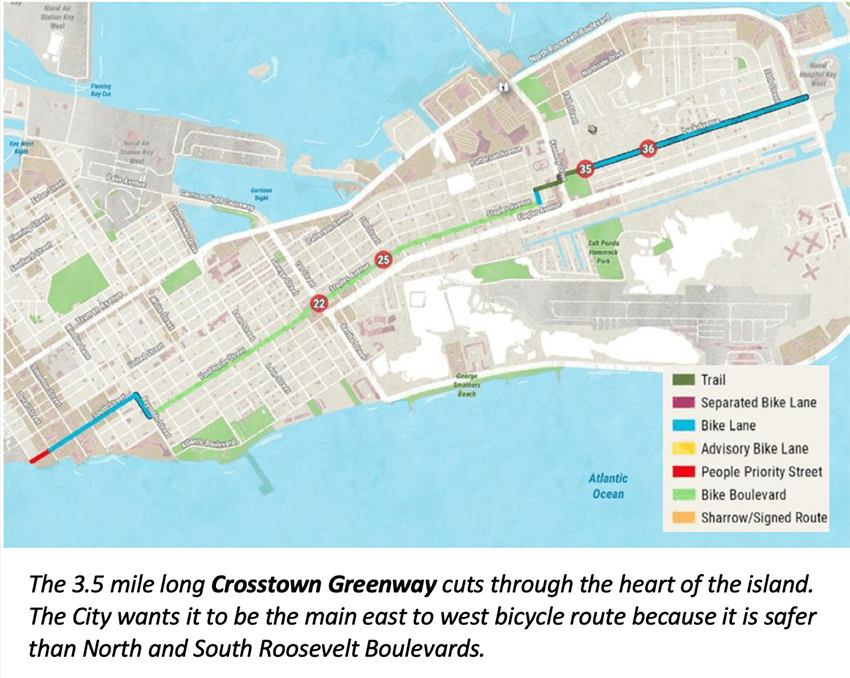
Doing Phase 2 of the Crosstown Greenway and constructing the Wicker Bike Trail, also on the Greenway, would go a long way towards making this important path through the middle of the city the best option to use from points north into town and vice versa because it is so much safer than N. Roosevelt Boulevard. More bike racks are needed everywhere, especially in the busy Duval Street corridor so if the City spends the allocated money and purchases and installs some racks that’s a good thing. But much of the bicycle and pedestrian elements in the plan are labeled as “TBD” or to be determined and we’re afraid the fact that Mr. Staub or a committee (TCT) is designated as the responsible party means things won’t get done because no one, high-ranking person is responsible.
With all the talk during the last couple of years of pedestrianizing Duval and some adjacent streets, experimenting with Mall on Duval, for putting in wider people-oriented sidewalks, for installing parklets and for slowing down the commercial streets so they can be used for people, art, trees, vendors, water fountains and more, we found it odd this plan remains silent on all these elements. Especially when 2 of 3 residents in the survey said they favored closing parts of Duval for pedestrian traffic on evenings and/or weekends. Our hope is this oversight will be rectified by the time the plan is adopted and that a similar commitment to the Duval Street Revitalization Study is made in the document.
Goal 2: Improve Public Transit
Will we continue to say “we can’t find bus drivers” because we’re not willing to pay market rate for this important position?
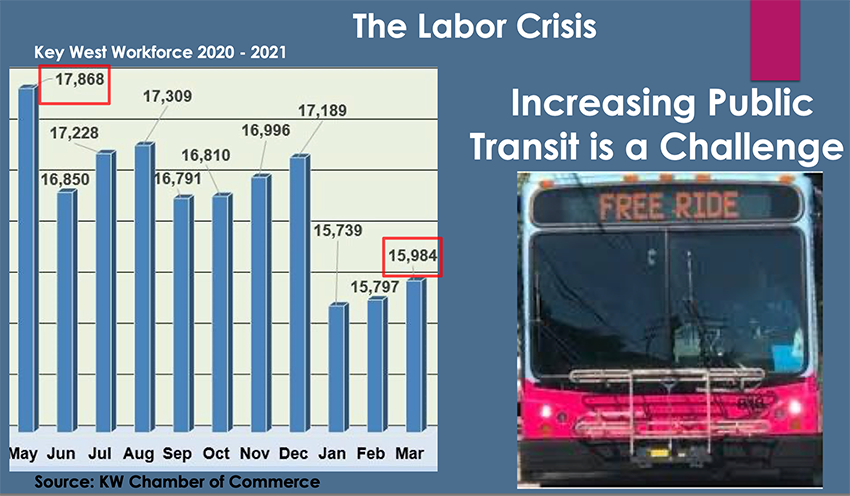
Currently on the North and South ‘City’ Lines the wait between buses is between 80 and 90 minutes and on the Lower Keys Shuttle is between 90 and 120 minutes (see “Sustainability Board Wants to Make Free Frequent and Simple Transit a Reality, February 6, 2021 for details). So, for the Plan to target 30-minute arrivals on the North and South Lines and 60 minutes on the Lower Keys Shuttle is a difference maker that should be applauded. But Elisa seemed to hedge the bet on this getting done citing the ‘labor shortage’ in Key West.
Mayor Johnston said that during discussions with staff and stakeholders everyone agreed that to really get people out of cars we needed to get the frequency down to 15 minutes, so no one is 100% satisfied with not meeting that threshold. But targeting 30 minutes seems the best anyone can hope to do this year. We agree with the Mayor that 15-minute frequencies are needed but if the City can really get to 30 during the next fiscal year that begins October 1, 2021, we’ll count that as progress.
What the plan should do is identify a 20-minute frequency target in year two and a 15-minute goal the next on the North and South Lines as well as keep chipping away at the Lower Keys Shuttle by targeting 60 minutes in year 1, 45-minutes in year 2 and 30 minutes in year 3. By year 4 Key West Transit should also begin to implement more of the additional “Loop” and “Connector” routes promised in the 10-Year Transit Development Plan.
To get any of this done the City will need to raise the pay to attract drivers. Currently the starting pay for non-CDL (commercial drivers license) is $15 an hour and for CDL drivers it is $16.89. Yes, the City offers health, vacation and pension benefits, but these hourly wages are simply too low for such an important position. That’s why these positions have gone unfilled for years. Historic Tours of America or HTA offers a starting salary of $20 plus gratuities and similarly generous benefits to drive its Conch Train and Trolley buses and often seems to be paying a signing bonus. Key West Transit must at least match what HTA is doing to compete. So why won’t they?
Maps at the bus stops with route and schedule information is a must so it is a good step they are finally committing to this. We’ve written about this before and will refer you to that article for why this is so important (The Sorry State of Key West Bus Stops – We Just Don’t Care; April 2, 2021). And while we think the plan elements of WIFI on the buses and a ‘Key West Transit App’ are nice, what the plan is missing is a commitment for a real marketing program (The Good, the Bad and the Ugly – A Dozen Marketing Things Key West Transit Can Do to Increase Ridership; April 9, 2021). For Key West Transit not to have a full-time marketing person is indefensible. If an FTE isn’t feasible, contract the function out like the Key West Historic Seaport does. Either way they need to get it done.
Goal 3: Parking Improvements
Well at least we aren’t adding additional free parking spaces, so less is more.
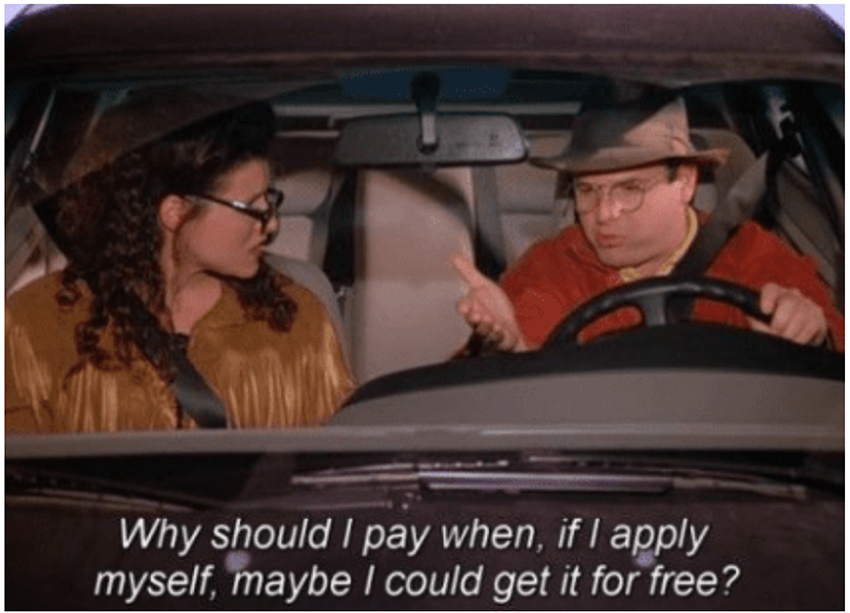
Making parking ‘easier’ to find and pay for, for those who do drive, is a good goal. Especially when that doesn’t mean making it more plentiful and free – because that induces more people to drive and just works against reducing congestion and our carbon footprint. So, studying a Key West Intermodal Center on Stock Island is a good thing. As is looking into one-way streets and reverse angle parking if it slows the street down leading to safer streets for bicycles and pedestrians or even frees up some street space for people.
We like the idea for a parking app for drivers to identify spaces available in parking garages to prevent circling (congestion). The app should be supplemented by more wayfinding around town to direct people to the same places because not all visitors will already have the app on their phone when they arrive. More pay by phone is also a good element of the plan.
What else is missing besides wayfinding? Well for starters the plan should likely commit to more Parking Enforcement personnel for the Parking Department. The case can certainly be made that these staff pay for themselves and then maybe we wouldn’t have carpetbaggers coming into town claiming they can make the City more money by getting rid of the department (Monorail, Monorail, Monorail or Just Say No to Privatizing Key West Parking; June 25, 2021).
There’s also no attempt of any kind at real parking reform. As we’ve discussed in these two stories: (Getting the Parking Right Leads to Streets for People – Part 1: Nobody Goes there Anymore. It’s Too Crowded – Six Reasons for Right Pricing Parking March 12, 2021; Getting the Parking Right Leads to Streets for People – Part 2: Battling Our Inner George Costanza – Ten Things We Can Do in Downtown Key West to Get the Parking Right March 19, 2021), downtown Key West has about 3,000 on-street parking spaces, one third are free and one third are nearly free ($0.05 cents a day) with a Residential Parking Permit. The balance are metered spaces. Until this abundance of free and underpriced parking is addressed, we’ll continue to have people cruising and causing congestion looking for these spaces, limiting turnover for retail and encouraging visitors and workers to use these spaces instead of long-term lots. We discussed 10 ways Key West could address this problem. NONE of these ideas is being put forward in the plan. That’s sad.
Goal 4: Reduce the Island’s Carbon Footprint
We Can Start by Educating People on Bike, Walk and Transit
We applaud the Plan for acknowledging the need for a mobility study. More information is always better. But given the timeline for expected completion in 2023 this line item will have no impact in the next few years. I mean the Duval Street Revitalization Study was to be half completed by now and is back out for yet another RFP, so it gives us pause at starting yet another study. But we do have excellent and recent Bike/Ped and Transit plans – so perhaps we should just concentrate on getting these already completed documents implemented.
Yes, we need electric buses. Good idea. Yes, we applaud changes to our land-use code to remove minimum parking requirements. Its time has come. And yes, by all means let’s raise parking meter rates and the price of Residential Parking Permits. All needed. All good things.
By far, the most immediately impactful and cost-effective item on this list could be ‘Public Information Efforts to Encourage Methods of Green Transportation.’ At the moment there is nearly zero marketing efforts by Key West Transit nor the Bike/Ped program. Studies show encouragement programs lift the use of these services by 15 to 50%. And their cost, relative to providing the service or putting in the infrastructure, is peanuts. This is the easy stuff. We’ll spend a million dollars plus for a bus or for a quarter of a mile of road but spending a few hundred thousand annually on marketing is deemed excessive. It is penny wise and pound foolish not to educate people how to use your bus and bicycle systems. We need to target employers and lodging with information on alternatives so they can influence their employees and guests respectively too.
Using the City’s wonderful but only public information officer to do the work associated with encouraging people to use green transportation, in addition to everything else she’s already doing for the Police Department and entire government, is silly. Here’s what the work entails. And that work isn’t simply putting out the occasional PR piece and Facebook post. It is marketing. It is also unrealistic to say that there’s no cost for this effort other than funds already available for the PIO’s use. Rather, the PIO should have a contractor, like what the Key West Historic Seaport uses, as well as a similar budget ($250,000) for this effort. THAT would show some serious effort and might move the needle. Otherwise, this is simply window dressing.
The Glass is Half Full
Despite the above caveats of what’s lacking in the plan, we’d say the glass is half full because we have excellent and current Bike/Ped and Transit TDP Plans on the books and adopted by the Commission. The Key West Forward Strategic Plan Traffic and Pedestrian Friendliness focuses those efforts and City staff’s time over the next year. It gives us citizens an easy road map to ascertain whether what they said will be accomplished, is or isn’t.
With the Onus on the Commission – Let’s Root for the Mayor to Succeed
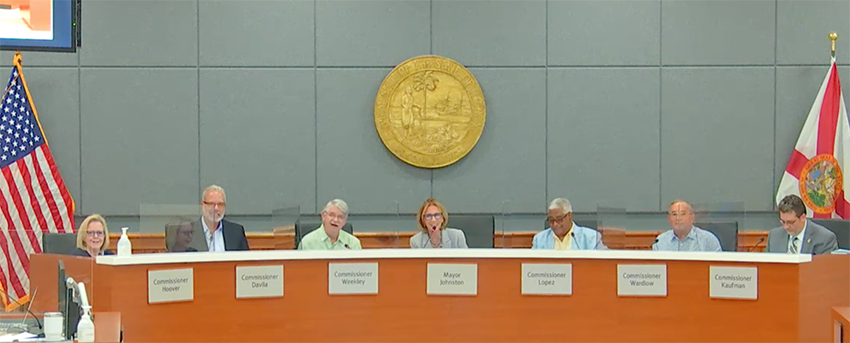
The Traffic and Pedestrian Friendliness element is a good start. And it is built upon forward looking, progressive and detailed Bike/Ped, Transit TDP and Parking and Alternative Transportation Group plans. It has buy in of City staff and has been developed alongside the City Manager and Mayor. That gives it a chance to succeed. Commissioner Sam Kaufman asked the question: “How many years have we been talking about bikes and adding bus frequency? Do we even have the capacity to do this?”
He’s right. Without the commitment of money for bus driver pay, projects, infrastructure, and studies and without the commitment of enough money in staff and consultants to do the work, and for the guts to occasionally remove parking so we can install good bike lanes, implementation will fall short.
Mayor Johnston bravely answered Mr. Kaufman’s question with a call to arms saying: “The answer is us (referring to herself and the Commissioners on the dais). Are we willing to spend the money that get us there? The limiting factor is us and what we’re willing to commit to.” Amen to that!
As budget season rolls around over the next few months, let’s give the Mayor and Commission the support and room to commit the money and resources to get the Traffic and Parking Friendliness element of the Strategic Plan implemented. That means we won’t be able to reduce taxes and we may need to prioritize these things over others. But with the citizens backing we may find the Commission is finally willing to commit the money to a better bike, walk and transit future for our island. We’ll know the answer in a few short months. Let’s root for the Mayor and Commission to succeed.
# # #
You can find all the KONK Life Streets for People column articles here and recent stories below:
- Monorail, Monorail, Monorail or Just Say No to Privatizing Key West Parking; June 25, 2021
- New City Manager Will Be Good for Bike, Walk, Transit and for Key West; June 18, 2021
- PeopleForBikes Ranks Key West 39th Best City for Bicycling; June 11, 2021
- First and Bertha Streets Corridor Road Improvements Are Another Missed Opportunity to Make Bicycling Safer and Easier; June 4, 2021
- Want Sidewalk Cafe’s and Other Amenities? We Need to Take Some Space from Cars; May 28, 2021
- In Quest to Improve Crosstown Greenway, City Prepares to Construct New Bike Trail Segment; May 21, 2021
- How Better Transit and Bicycle Facilities Can Help Address Affordable Housing; May 14, 2021
- City Commission Tries to Have Its Cake and Eat It Too on S. Roosevelt Blvd. – Perhaps Dooming a Safer Project; May 7, 2021
- What’s Old is New Again – Two New Bike Trails Take Us Back in Time to a Simpler Key West, April 30, 2021
- Do Key West Commercial Areas Need Business Improvement Districts (BIDS)? – Part 2: What BIDS in Key West Might Look Like, April 23, 2021
- Do Key West Commercial Areas Need Business Improvement Districts (BIDS)? – Part 1: What’s a BID?; April 16, 2021
- The Good, the Bad and the Ugly – A Dozen Marketing Things KW Transit Can Do to Increase Ridership; April 9, 2021
- The Sorry State of Key West Bus Stops – We Just Don’t Care; April 2, 2021
- It’s Time to Reconsider a Road Diet on S. Roosevelt and Make the Promenade and Road Safer; March 26, 2021
- Getting the Parking Right Leads to Streets for People – Part 2: Battling Our Inner George Costanza – Ten Things We Can Do in Downtown Key West to Get the Parking Right; March 19, 2021
- Getting the Parking Right Leads to Streets for People – Part 1: Nobody Goes there Anymore. It’s Too Crowded – Six Reasons for Right Pricing Parking; March 12, 2021
- Eight Things We Can Do to Pedestrianize Duval and Still Allow Cars, March 5, 2021
- How We Get Wider Sidewalks Downtown Without Ripping Up the Streets – Parklets; February 26, 2021
- The Wee Donkey, Whataboutism, Bathwater and Duval Street’s Future; February 19, 2021
- Averting E-Bike Mayhem and Making Key West Sidewalks Safer; February 12, 2021
- Sustainability Board Wants to Make Free, Frequent and Simple Key West Transit a Reality, February 5, 2021
- Volunteers and a Little Green Paint Show How We Can Make it Safer to Bike;January 29, 2021
Chris Hamilton is founder of the local advocacy group Friends of Car-Free Key West & Duval Street/Historic Downtown. He’s a native of the District of Columbia, where for a couple decades+ he led nationally renowned efforts promoting transit, bike, walk and smart growth for Arlington County, VA’s DOT. Chris has lived in Key West since 2015. He lives downtown and works and volunteers for a couple non-profits.
[livemarket market_name="KONK Life LiveMarket" limit=3 category=“” show_signup=0 show_more=0]

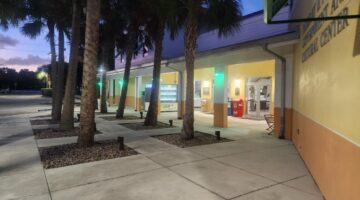



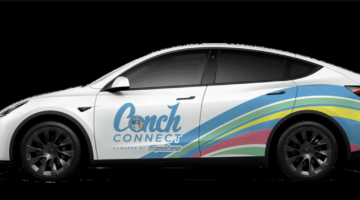
Leave Key West alone and let it be Key West. Modernizing Old Key West to benefit those spending the insurmountable tourist dollars destroys the feel of and exactly what KW once was. We are not Miami nor should we act like it.